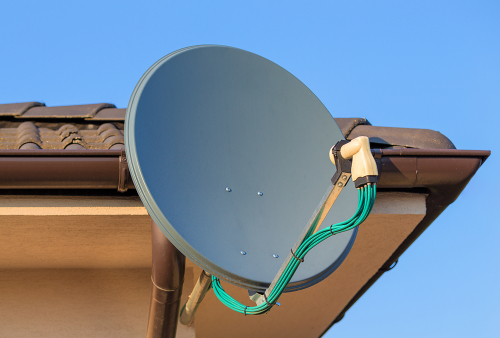Best aerial installation & repair specialists in Ballito, KwaZulu-Natal
Top aerial installation & repair specialists near you
Browse the best aerial installation & repair experts and compare ratings and reviews.
Hire the best aerial installation & repair specialist
Search Uptasker for the best aerial installation & repair specialists - check ratings and read customer reviews
Why are aerials so important in communication?
It would be hard to imagine a life without TV, mobile phones, the internet and the radio, but all of these devices rely on transmitters and aerials – or antennas – in order to both send and receive the signals required to operate. Whether you are working on a land- or satellite-based signal, you will need an aerial to actually receive (pick up) the signal and transmit it into your home or business.
Everything comes down to radio waves
In simple language, an aerial – or receiver - picks up and relays the signals received from a transmitter. An aerial is the metal rod or dish which is responsible for picking up electromagnetic radiation in the form of radio waves and converting these into electrical signals. Wikipedia explains that “Modern technology relies on radio waves for fixed and mobile radio communication, broadcasting, radar and radio navigation systems, communications satellites, wireless computer networks and many other applications”. In order for any type of modern telecommunication system to operate, you have to have both a transmitter which converts electrical signals into radio waves, and the aerial which receives the radio waves and turns them into electrical signals.
There are three different frequencies of radio waves and each have differing propagation characteristics in the Earth's atmosphere, being ground waves which follow the earth’s curvature, skywaves which bounce off the ionosphere and those which travel on a line of sight and which are therefore to the visual horizon.
Not all aerials are the same ...
Because all telecommunications and internet usage depend on radio waves of different frequencies and wavelengths, various different aerials may be required. The internet depends upon the same kind of waves which are used for radio and TV, yet the receiving aerials are not the same in shape, size, position, etc. Only a qualified and knowledgeable aerial installation specialist will know which aerial is required and where it should be positioned for maximum effectiveness. Three features of antennas are particularly important : directionality, signal gain or boost, and bandwidth. In the case of TVs, you get much more gain from a complex outdoor aerial which is facing the correct way for maximum signal gain and clarity or quality of picture. This is one reason why you need to make use of the services of a qualified aerial specialist who will ensure that the dish or aerial is correctly positioned. And if the aerial suffers damage for any reason, your aerial specialist will be there to get you back up and running as quickly as possible.
How do I find the right aerial installation and repair specialist?
Check their online ratings and customer reviews
Aerial installation and repair specialists are easy to find. Not only do they have a presence in their own shops and premises in towns, but they are easily found through the Yellow Pages. With the internet becoming such a vital search tool, many people are using search engines such as Uptasker to find a specialist in their local area. Uptasker is one of the friendliest and informative search sites, since it list suppliers in geographical locations, offers one-click links to websites, where available, and allows you to read online ratings and customer reviews at a glance.
Top aerial installation and repair specialist tips

When setting up a new installation for your TV – for instance – make sure that you are doing it right the first time by calling in the professionals who have the experience, knowledge and expertise to position your new aerial correctly for the best reception possible. They have the technology to ensure that your appliance will receive the strongest signal and will withstand all kinds of weather, whilst still being unobtrusive. If your aerial goes on the glitch, these are the professionals to call for assistance as they know what they need to look for and will have all the necessary equipment on hand to get you up and running again as quickly as possible. For more tips and information, see Uptasker’s aerial installation and repair specialist articles.
Read Aerial Installation & Repair articles